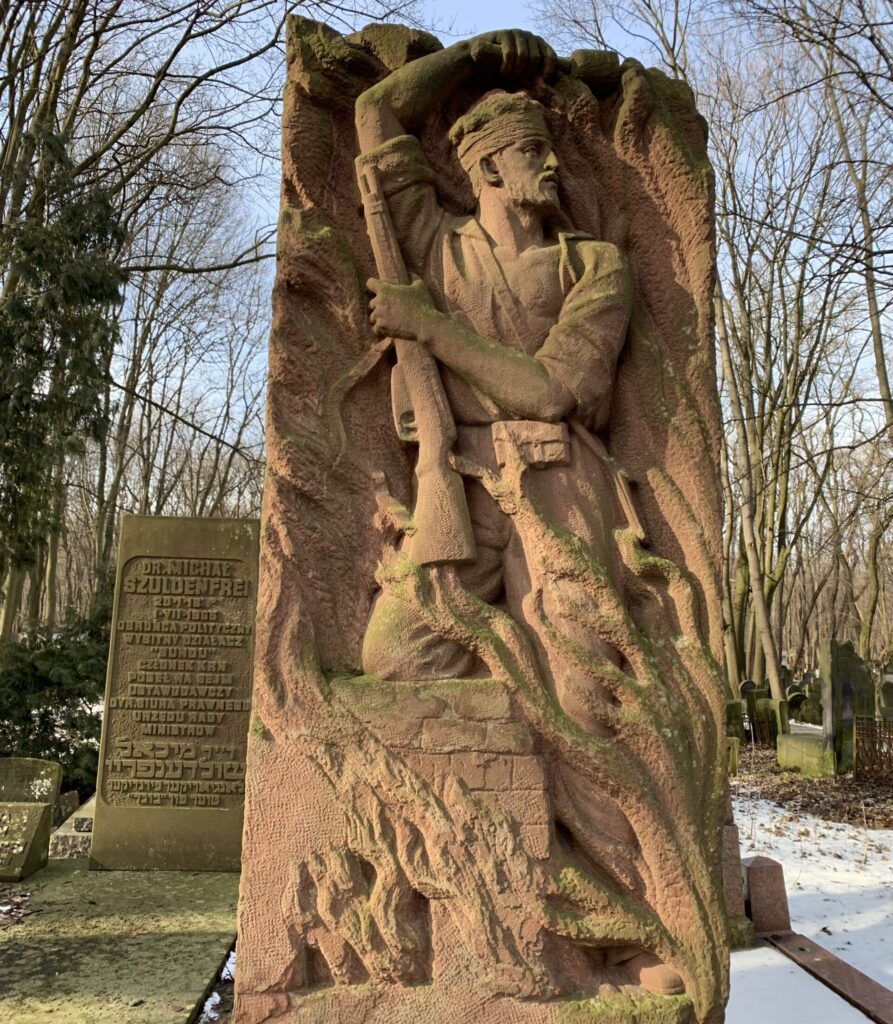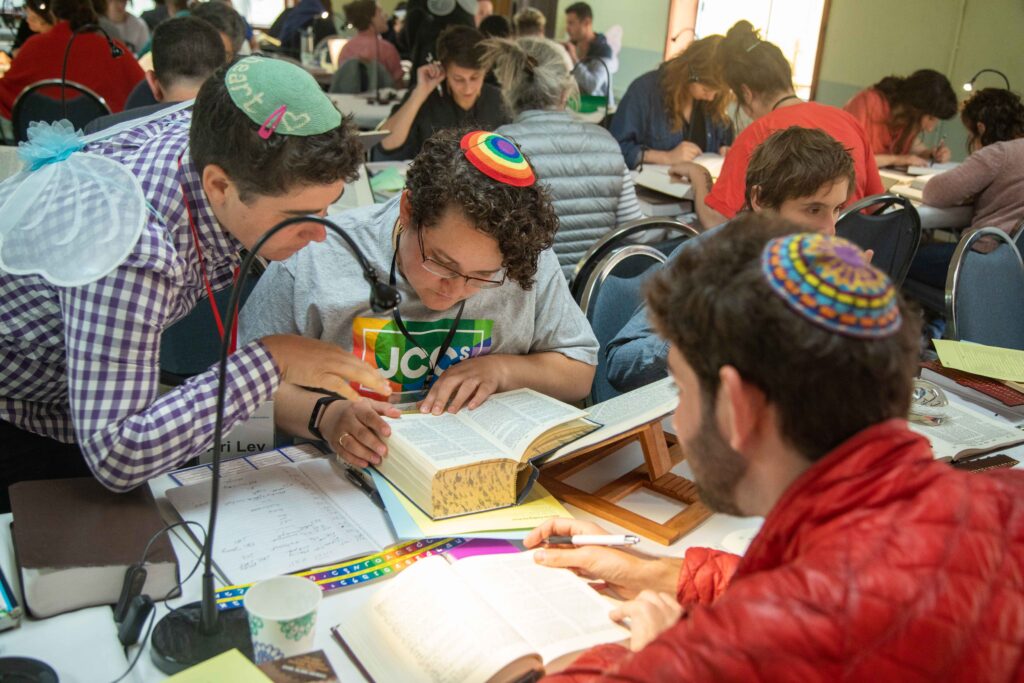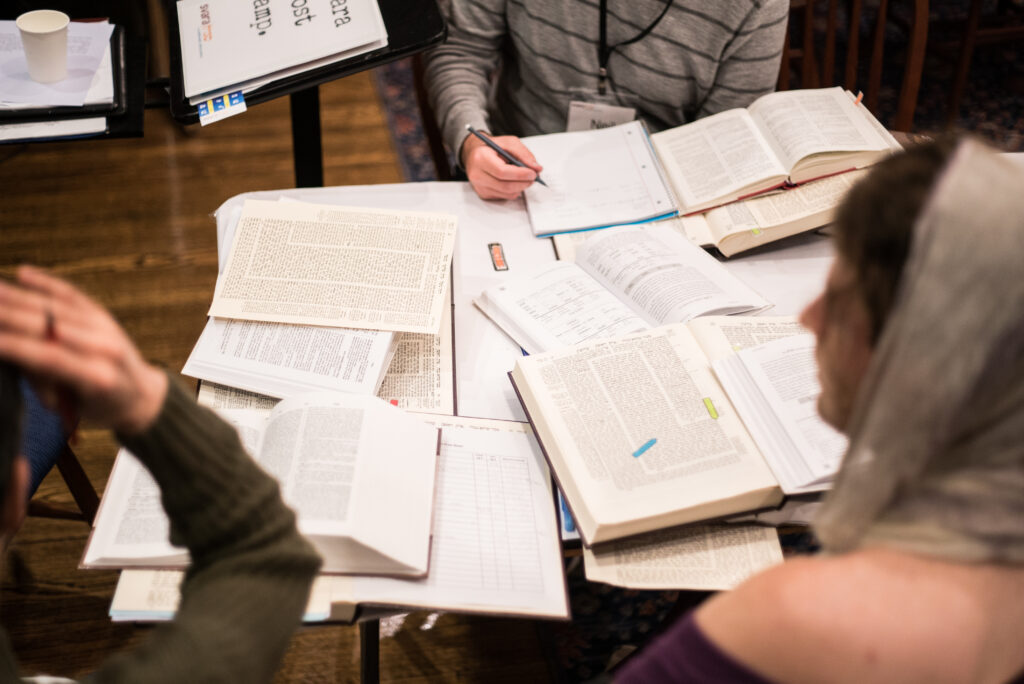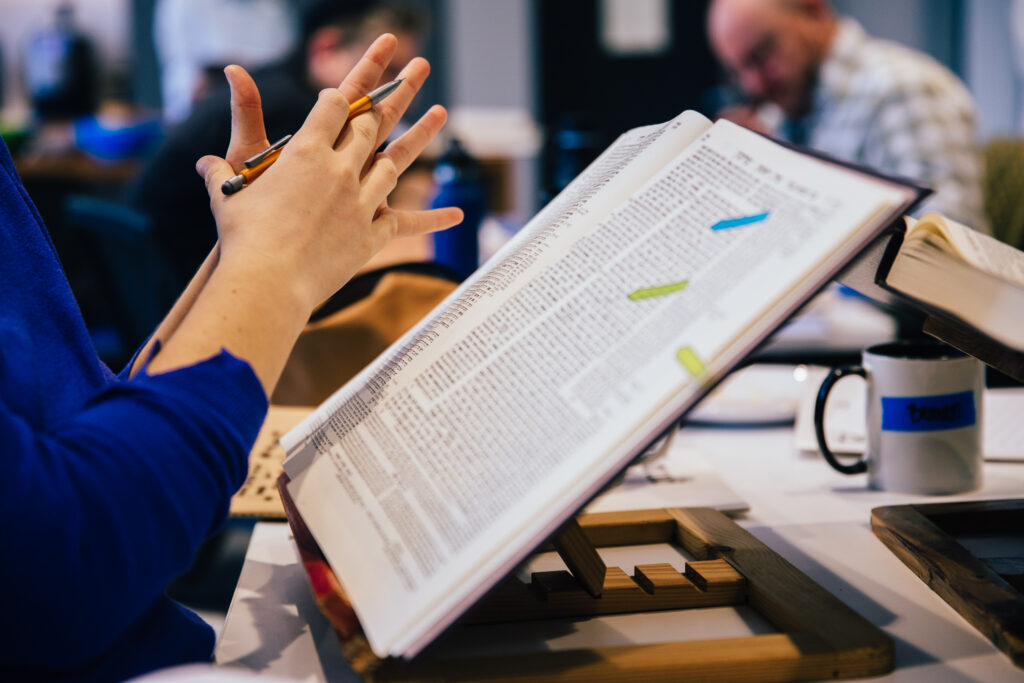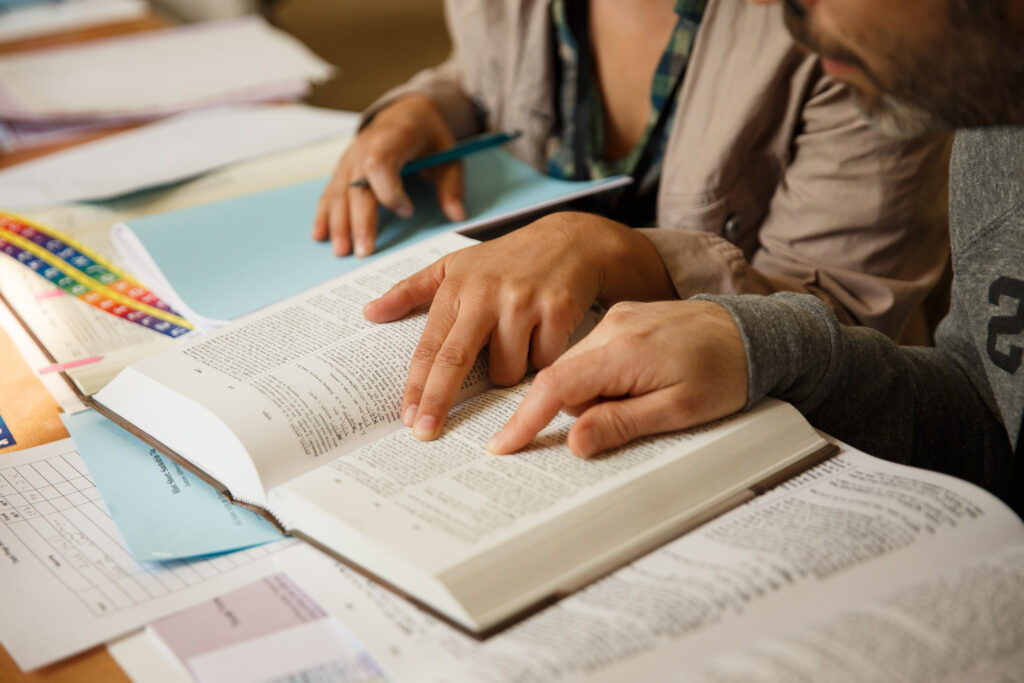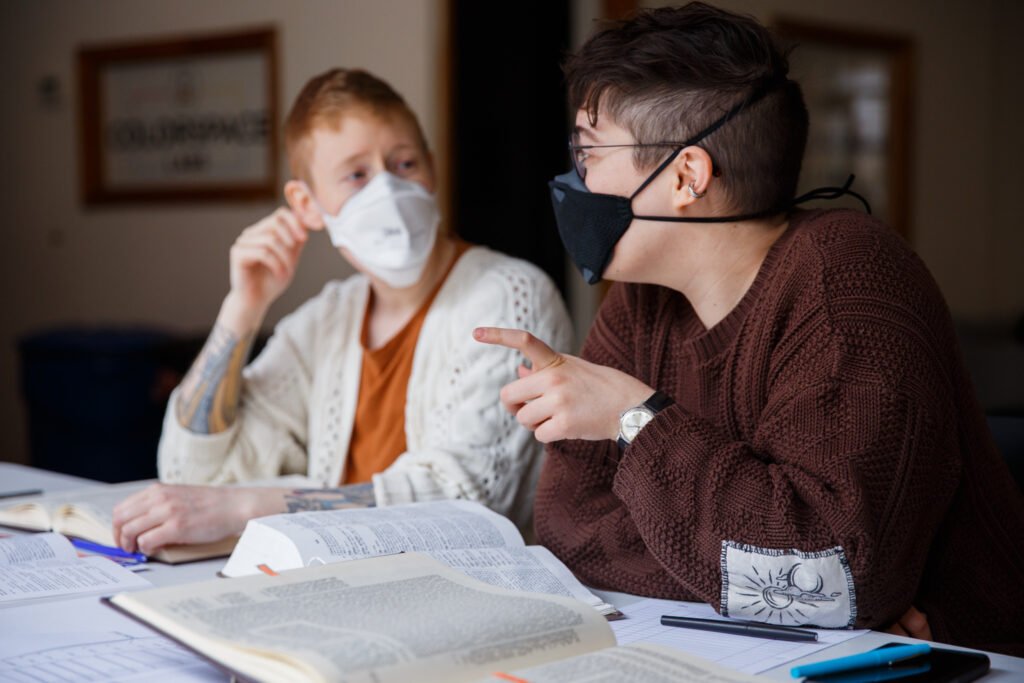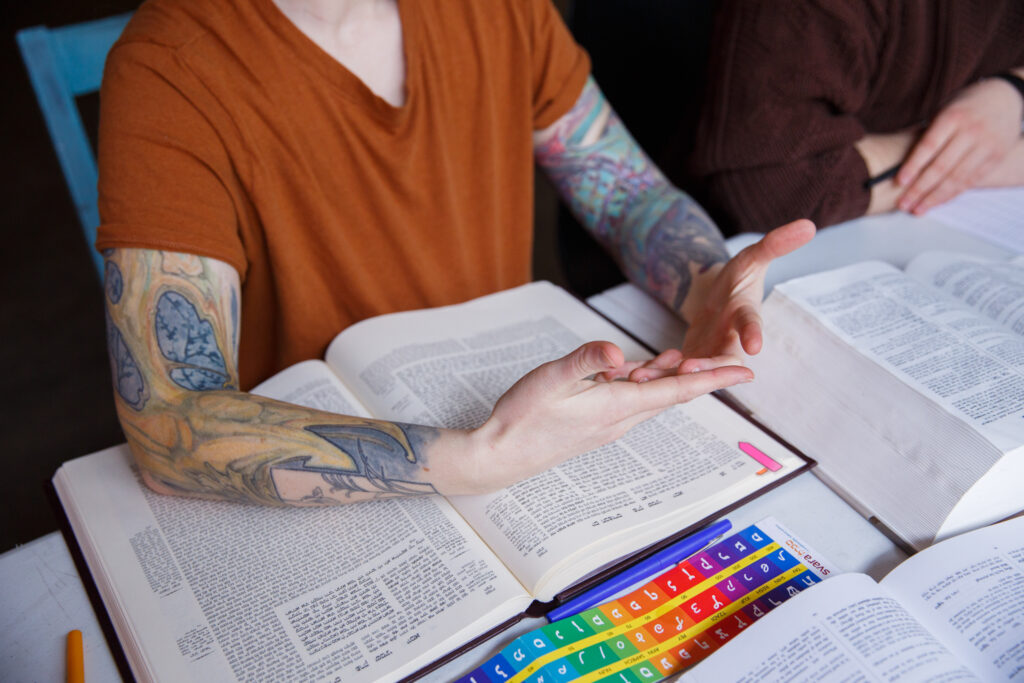Photo: A memorial to the fighters of the Bund and Tzukunft in the Warsaw Ghetto Uprising, located in the Warsaw Jewish Cemetery. Photo by Alyx Bernstein.
This week, all around the world, Jewish communities observed what is known as Yom HaShoah v’ha’Gevurah יום השואה והגבורה, the Day of Holocaust [Remembrance] and Heroism. That day, whose Hebrew date is the 28th of Nissan and this year fell on the night of Monday April 17th to Tuesday April 18th, was chosen by the Israeli Knesset (parliament) in 1959, as that date marked the anniversary of the Warsaw Ghetto Uprising in 1943. In 2005, however, the United Nations declared a different day, January 27th, to be International Holocaust Memorial Day as it commemorated the Allied Forces’ liberation of the Auschwitz Death Camp in 1945.
This year, I found myself struck by the distinction between these memorial observances—one commemorates the world’s victorious, though much delayed, response to an epic human genocide after nearly 18 million Jews, LGBTQ persons, persons with disabilities, political critics, academics, artists, activists, and civilians throughout the European continent, were murdered; the other commemorates the nearly impossible, infeasible attempt of a starved and abused community to rise up together against their abusers, their occupiers, their murderers. While the Warsaw Ghetto Uprising was eventually subdued by the Nazis, I find myself thinking about the concept of heroism, gevurah גבורה, which became part of this memorial day’s name. The root ג–ב–ר in its various forms can mean “strength,” “to grow strong,” “to prevail,” “to sustain,” “to gather courage.” For us SVARA-niks, I wonder how we can look at this solemn day, both asking and answering this pivotal question—how is what we do at SVARA, learning and wrestling with this radically traditionally queer Talmudic tradition, an act of gevurah גבורה, and how can we honor the memories and legacies of those lost, through our study?
The difference between these two commemorations, to me, comes down to whether we want to honor the power of the powerful or the power of those who were otherwise made powerless. SVARA’s concentration on returning the radical tradition of Talmud study to those who have been either excluded from it or made to feel disempowered by it is in line with the latter thinking, which more closely aligns with the Holocaust remembrance that we observed this week. The question of what is true power or heroism, this gevurah גבורה, is often associated in contemporary narratives with the glorification of “fighting back.” In queer history we may be familiar with the slogan “Gays Bash Back.” In some aspects of our Holocaust studies, however, there is much shame and at worst shaming of victims who did not or were not able to fight back, and whose daily resistance to breathe in and breathe out day after day is not as glorified as the great uprising of the Warsaw Ghetto. There are some who believe that it was due to an internalized shame around the concept of “fighting back” that actually led to the Israeli Knesset choosing this particular date, the anniversary of the Warsaw Ghetto Uprising, to combat globalized Christian hegemonic misogyny around what “true men” do to defend themselves vs. what “effeminized” Jewish men do. With that said, the question of what our heroism or our gevurah is as learners of Talmud becomes complicated, as we don’t want it to become a reactionary endeavor.
The question can also evolve then to be, ‘What is our authentic heroism and our authentic gevurah, our “fighting back”?’ Could it be that we are fighting back every time we open a masechet מסכת? Is this study of Talmud a genuine act of resistance in an unjust world, in a world that is all too eager to allow the past to repeat itself in a myriad of horrific forms? When I’m leading a class in chazarah חזרה (review) or recitations, while students breathe new life into these ancient words from their holy queer voices, are we doing enough or anything at all to return the breath to those voices suffocated and extinguished at the hands of police brutality, gun violence, domestic violence, homophobia, ableism, racism, misogyny, climate disaster, poverty, pandemic, epidemic, etc. in our very day? Many of us have complicated relationships with the history of the Holocaust, but if nothing else, is it not a visceral reminder that humanity is precious and fragile and can be defiled all too easily by fear, greed, and hatred? Where does Talmud come to disrupt patterns of oppression when the oppressive forces are so vast, so powerful, and oftentimes, so normalized?
Rabbi Kalonymus Kalman Shapira (1889-1943), also known as the Piaseczner Rebbe, was a Chasidic rebbe who was forced into the Warsaw Ghetto with the rest of his community and many of his students. The Piaseczner Rebbe, however, never stopped teaching while he was in the ghetto. In fact, he gave regular drashot דרשות, sermons, for the different holidays, as well as delivered several teshuvot תשובות, legal responsa, on halakhic matters pertaining to Jewish life in the ghetto. His teachings were collected by his students and hid in canisters only to be discovered years later after the liquidation of the Warsaw Ghetto. They were then compiled into a collection known as Aish Kodesh אש קודש, Holy Fire. I believe the Piaseczner Rebbe believed that Talmud and the study of Torah was an act of resistance under impossible circumstances. In a sermon that he delivered for Shavuot (which is in about 5 weeks from now), the Piaseczner Rebbe riffed on the following piece of Talmud from Shabbat 105a:
רַבִּי יוֹחָנָן דִּידֵיהּ אָמַר: ״אָנֹכִי״, נוֹטָרִיקוֹן: אֲנָא נַפְשִׁי כְּתַבִית יְהַבִית. רַבָּנַן אָמְרִי: אֲמִירָה נְעִימָה כְּתִיבָה יְהִיבָה. אִיכָּא דְּאָמְרִי ״אָנֹכִי״ לְמַפְרֵעַ: יְהִיבָה כְּתִיבָה נֶאֱמָנִין אֲמָרֶיהָ
Rabbi Yoḥanan himself said [that the word] anokhi אנכי [which begins the Ten Commandments] is an abbreviation [notarikon] for: I myself wrote and gave [ana (א) nafshi (נ) ketivat (כ) yehavit (י)]. The Rabbis said (it is an abbreviation for): A pleasant statement was written and given [amira (א) ne’ima (נ) ketiva (כ) yehiva (י)]. Some say the word anokhi אנכי can be interpreted backwards: It was written, it was given, faithful are its statements [yehiva (י) ketiva (כ) ne’emanim (נ) amareha (א)].
In its original Talmudic context, the debate at hand is concerning how many letters one must have written to violate the injunction that one should not write on Shabbat. Some of our ancestors state it must be a whole word, others say even a single letter, and a middle ground conclusion seems to resolve that up through the writing of two letters is permitted except that sometimes letters are abbreviations for whole entire words, and thus two letters should be cautioned. This example of אנכי is used to exemplify the extensive nature of abbreviations, or notarikon נוטריקון. PS- אנכי, in Biblical Hebrew, is often just outside-translated as “I”, as in the beginning of the Ten Commandments—“I am the Lord your G!D”.
The Piaseczner Rebbe goes in a very different direction and does his own very outside understanding of the sugya. He writes:
והיא גודל ההתקשרות בינו יתברך לישראל בקבלת התורה, כיון שאליהם דיבר ונתקשר אליהם עצם המדבר בחינת “אנכי ד'” לא הדיבורים לבד, רק בחינת “אנא נפשאי כתבית יהבית” (שבת קה), “נפשאי” כביכול נתגלה לישראל על ידי לימוד התורה שלמד ד’ עמנו
This is the magnitude of connection between G-d and Israel at the receiving of the Torah: since he spoke to them and connected to them the essence of the Speaker, in the aspect of “I am the Eternal One” not only in words but also in the aspect of “I myself wrote and gave [the Torah]”, (Shabbat 105) “Myself,” as it were, was revealed to Israel through the study of Torah that God taught/studied with us.
The Piaseczner Rebbe looks at this piece of Talmud and sees that there are multiple levels of meaning and relevance. Not only is this piece talking about the sacred nature of time that is Shabbat and the sacred radical power of words down to each individual letter, but it’s talking about the intimacy with which G!D engages with us, the wrestlers (there’s a famous midrashic understanding that the title Israel is a combination of the words yasar-El יסר/ישר + אל, meaning one who struggles / wrestles with Divinity / G!D). The Piaseczner Rebbe plays on the word נפשא, meaning “self” or “himself” in this case and says that actually, G!D is not interested in just learning from G!D’s own self or transmitting G!D’s preconceived Torah to Israel but rather G!D wants to learn and study Torah with us.
He concludes his sermon with the following:
לכן בשבועות זמן קבלת התורה וכן תמיד כשלומדים תורה הוא עת ישועה, ואין מקטרג יכול לשלוט אז חס וחלילה בישראל כיון שהוא יתברך מדבר עמנו ועצם אנכי מתגלה
Thus, on Shavuot, the time of receiving the Torah, and always, when we study Torah, it is a time of salvation/triumph, in which no detractor is able to rule over Israel, G-d forbid, since G-d speaks to us and the essence of Anokhi [“I” i.e. the Divine essence] becomes revealed.
For the Piaseczner Rebbe, the study of Torah was an act where G!D G!Dself learns from the learners, from us. What I learn from this is that G!D today learns from us, from our insights, from our svara סברא, our moral intuition, which reveals the deepest truths in this ancient tradition again and again. And if G!D can learn something new then so can the world, our world. The purpose of learning Torah and Talmud, according to our ancestors, was to cultivate a long-term, sustainable, prevailing resistance to close-minded, non-inquisitive thinking. The purpose of this learning is to build in us a great resistance to bias and prejudice, a resistance to the silencing of dissent and diversity, and a love of life with its intricate and often complicated paths to redemption and liberation. So is Talmud study an act of gevurah גבורה? I’m not always sure, but I’m damn sure that learning with SVARA keeps me honest about when it’s not. And I hope and pray that every time we are in a SVARA beit midrash that we can know that G!D is waiting, that the world is waiting, yearning, for what our queer divinity-wrestling voices have to say, and what are hands can do, strengthened by this tradition, and each other, to bring redemption to this broken world.

